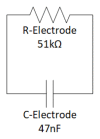Long-Term Polygraphic Monitoring through MEMS and Charge Transfer for Low-Power Wearable Applications
- PMID: 35408181
- PMCID: PMC9002930
- DOI: 10.3390/s22072566
Long-Term Polygraphic Monitoring through MEMS and Charge Transfer for Low-Power Wearable Applications
Abstract
In this work, we propose a wireless wearable system for the acquisition of multiple biopotentials through charge transfer electrostatic sensors realized in MEMS technology. The system is designed for low power consumption and low invasiveness, and thus candidates for long-time monitoring in free-living conditions, with data recording on an SD or wireless transmission to an external elaborator. Thanks to the wide horizon of applications, research is very active in this field, and in the last few years, some devices have been introduced on the market. The main problem with those devices is that their operation is time-limited, so they do not match the growing demand for long monitoring, which is a must-have feature in diagnosing specific diseases. Furthermore, their versatility is hampered by the fact that they have been designed to record just one type of signal. Using ST-Qvar sensors, we acquired an electrocardiogram trace and single-channel scalp electroencephalogram from the frontal lobes, together with an electrooculogram. Excellent results from all three types of acquisition tests were obtained. The power consumption is very low, demonstrating that, thanks to the MEMS technology, a continuous acquisition is feasible for several days.
Keywords: MEMS technology; electrostatic sensors; long time domestic monitoring; low power consumption; multiple biopotentials acquisition; wearable sensors.
Conflict of interest statement
The authors declare no conflict of interest.
Figures


















References
-
- Jani A.B., Bagree R., Roy A.K. Design of a low-power, low-cost ECG & EMG sensor for wearable biometric and medical application; Proceedings of the 2017 IEEE SENSORS; Glasgow, UK. 29 October–1 November 2017; pp. 1–3.
-
- Mai N.-D., Hoang Long N.M., Chung W.-Y. 1D-CNN-based BCI system for detecting emotional states using a wireless and wearable 8-channel custom-designed eeg headset; Proceedings of the 2021 IEEE International Conference on Flexible and Printable Sensors and Systems (FLEPS); Manchester, UK. 20–23 June 2021; pp. 1–4.
MeSH terms
LinkOut - more resources
Full Text Sources
Other Literature Sources

